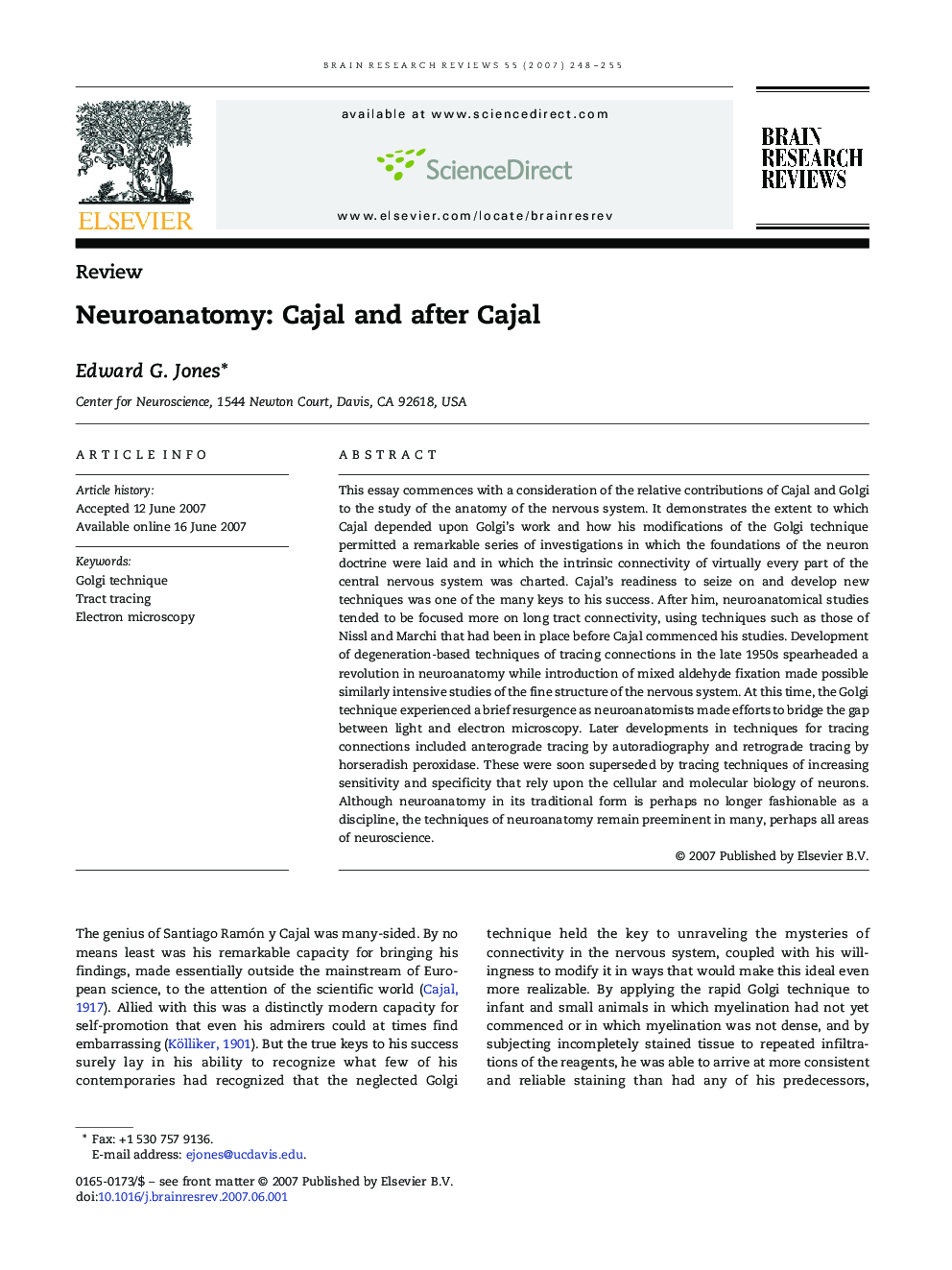| Article ID | Journal | Published Year | Pages | File Type |
|---|---|---|---|---|
| 4333948 | Brain Research Reviews | 2007 | 8 Pages |
Abstract
This essay commences with a consideration of the relative contributions of Cajal and Golgi to the study of the anatomy of the nervous system. It demonstrates the extent to which Cajal depended upon Golgi's work and how his modifications of the Golgi technique permitted a remarkable series of investigations in which the foundations of the neuron doctrine were laid and in which the intrinsic connectivity of virtually every part of the central nervous system was charted. Cajal's readiness to seize on and develop new techniques was one of the many keys to his success. After him, neuroanatomical studies tended to be focused more on long tract connectivity, using techniques such as those of Nissl and Marchi that had been in place before Cajal commenced his studies. Development of degeneration-based techniques of tracing connections in the late 1950s spearheaded a revolution in neuroanatomy while introduction of mixed aldehyde fixation made possible similarly intensive studies of the fine structure of the nervous system. At this time, the Golgi technique experienced a brief resurgence as neuroanatomists made efforts to bridge the gap between light and electron microscopy. Later developments in techniques for tracing connections included anterograde tracing by autoradiography and retrograde tracing by horseradish peroxidase. These were soon superseded by tracing techniques of increasing sensitivity and specificity that rely upon the cellular and molecular biology of neurons. Although neuroanatomy in its traditional form is perhaps no longer fashionable as a discipline, the techniques of neuroanatomy remain preeminent in many, perhaps all areas of neuroscience.
Related Topics
Life Sciences
Neuroscience
Neuroscience (General)
Authors
Edward G. Jones,
